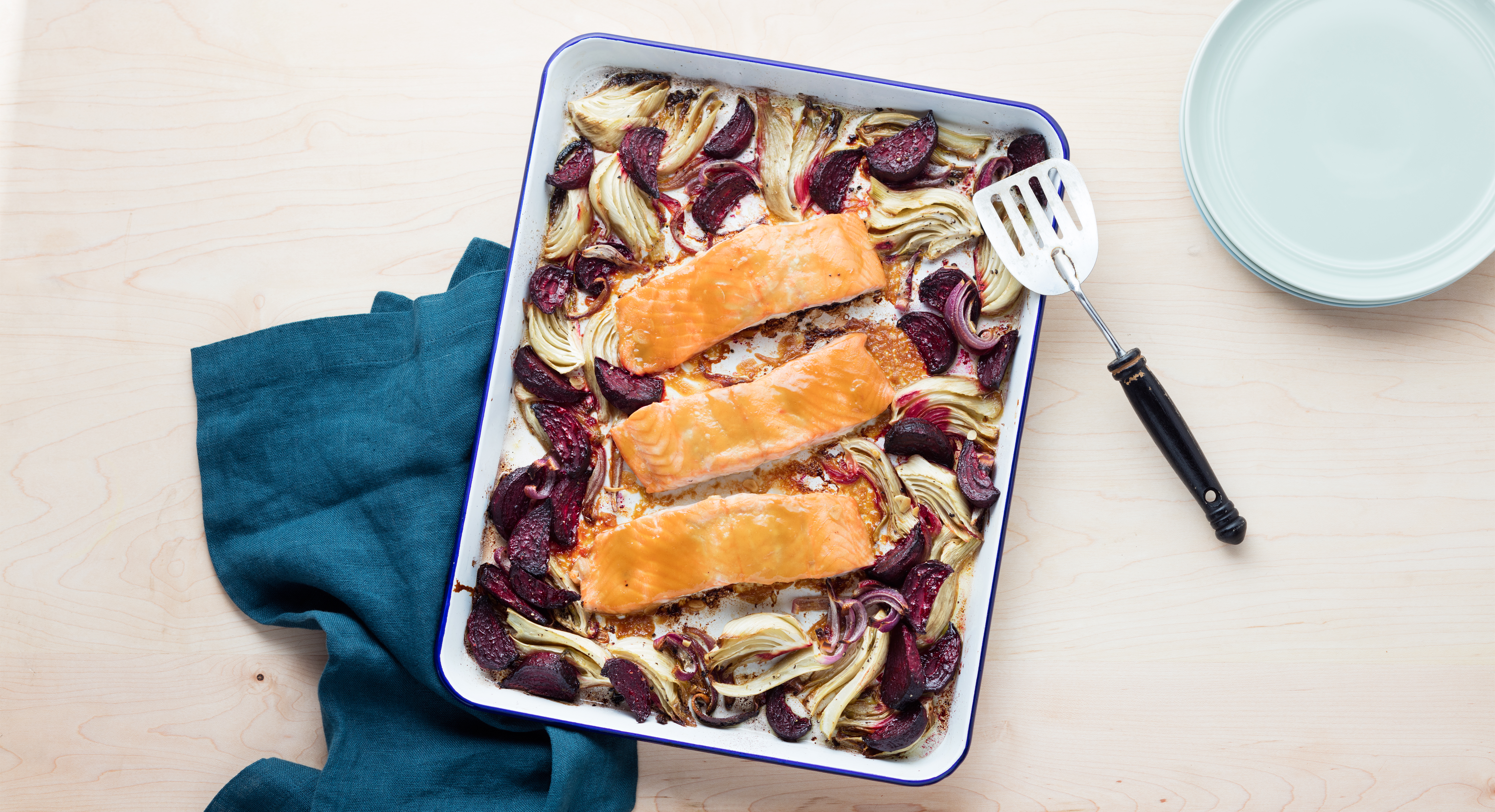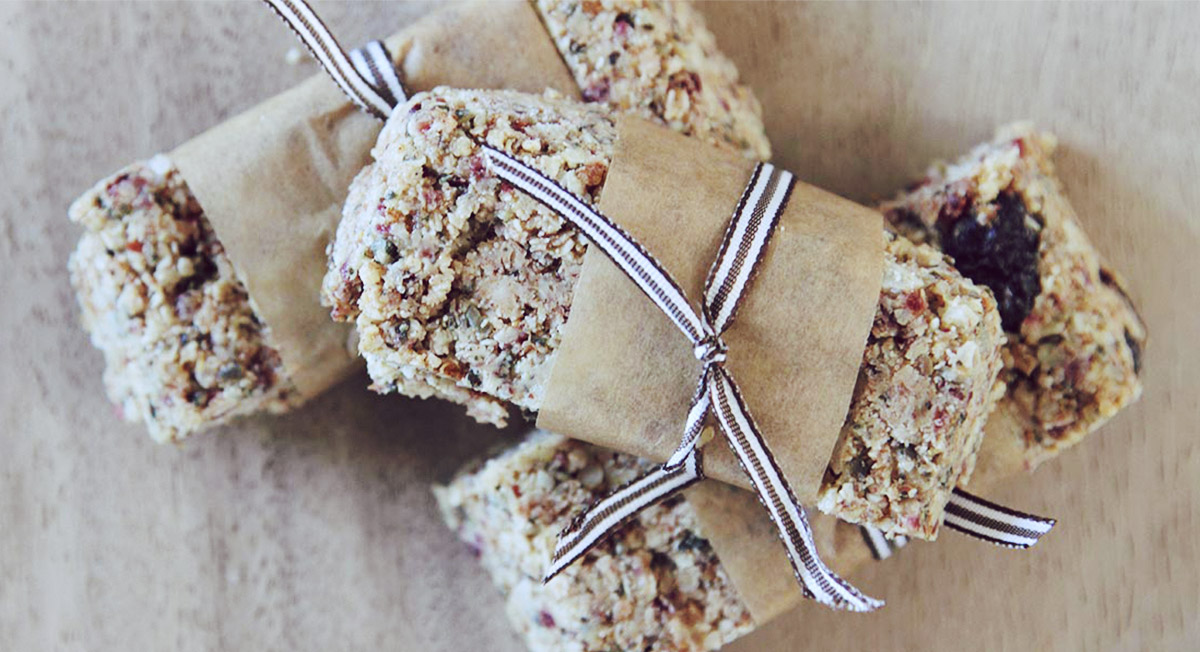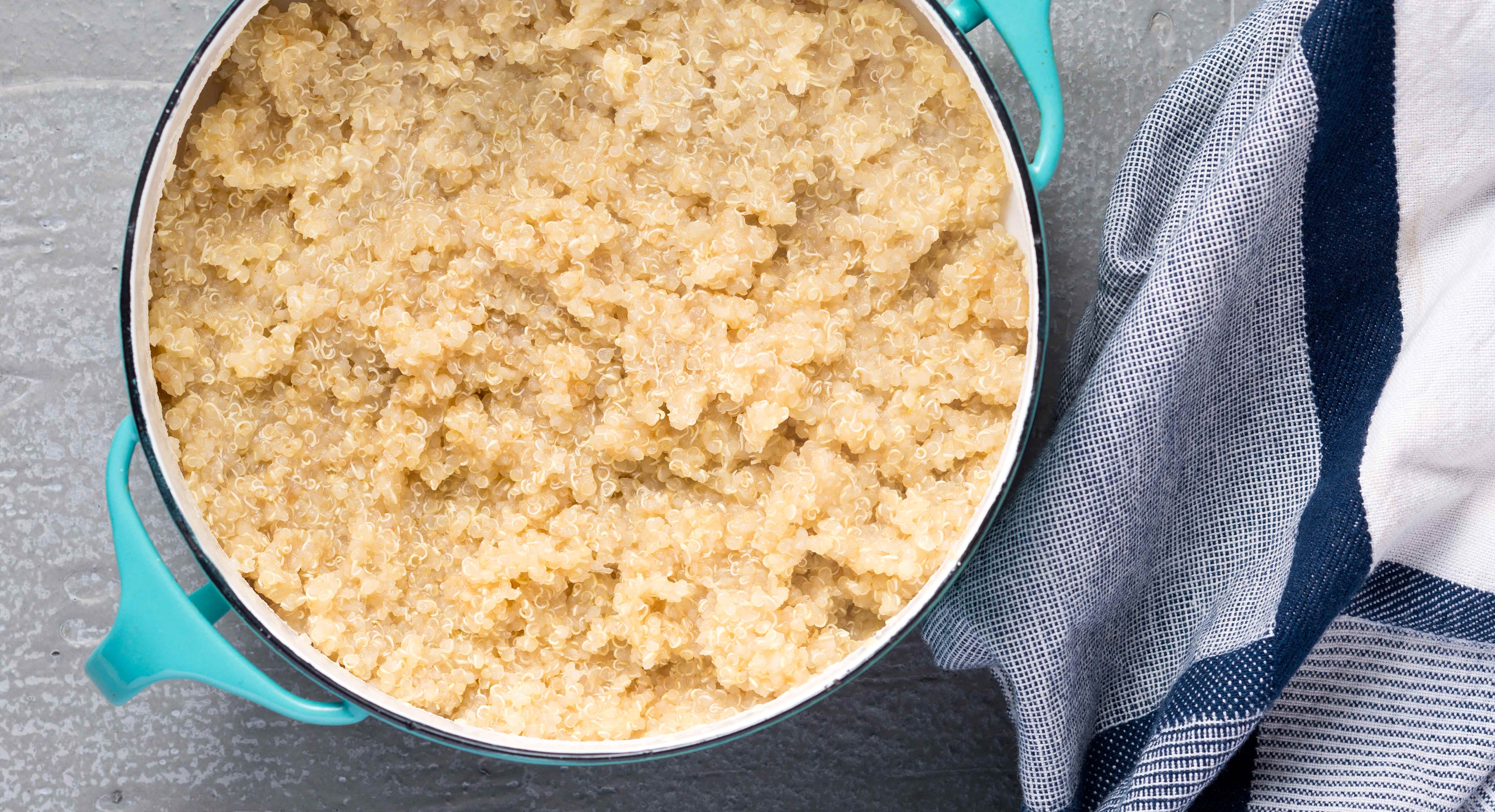Rice and oats have long been staples in the standard American diet, but for those that eat low-carb or are gluten-free, these two ingredients aren’t always an option. Instead, there are other ways to go against the grain with nutritious choices like millet and quinoa.
Both are incredibly versatile—great in porridges, breakfast bars, salads, sides, and any other number of recipes—and also come with a good boost of protein and fiber. But, millet and quinoa aren’t always interchangeable. Keep reading to learn more about their unique characteristics, the best ways to cook them, and how they can be utilized in a range of dishes.
More about millet
Millet is a true cereal grain that’s able to thrive in harsh, arid, dry environments and has a short growing season, which has made it a more popular option for farmers and grocers (though it has been cultivated in Asia for nearly 10,000 years) [1]. The most common type is called Pennisetum glaucum, also known as pearl millet.
Millet nutrition and health benefits
Millet appears as small round, yellow balls that look somewhat like birdseed—but don’t let that turn you off. Its ability to be used in a variety of foods, as well as a high nutrient content and suitability for those with Celiac disease or gluten intolerance has placed it in the spotlight in recent years.
In fact, millet is fast becoming a staple in some developing countries, and for good reason since it’s packed with energizing B vitamins and protein as well as filling fiber that can help with weight management and digestion [2]. It also has good doses of calcium, which helps maintain the health of bones and teeth, as well as magnesium, a mineral touted for its anti-inflammatory effects.
On top of all its amazing health benefits, millet is generally a lower cost per serving than quinoa.
How to cook millet
Millet is quite easy to prepare—all you need is one part grains to two parts water. Rinse the millet in a sieve or colander, and then mix the grain and water together in a saucepan over medium heat. Once the water starts to boil, turn the heat to low and let the mix simmer for 10-15 minutes. After that time, the water should be completely absorbed and you’ll have a tasty grain that just needs a little fluffing with a fork to serve. This is the ideal way to make millet if you’re intending to add it to a sauce or mixing into a soup or another rich base.
If you’d prefer to add some grilled veggies on top or want to mix the grains in with some kale for a filling salad, you might want to make the millet a bit more moist. To do so, simply add some more water (roughly three parts water to one part grain), which will make the millet a bit thicker. Cooking with vegetable, beef, or chicken stocks instead of water can also up the flavor factor as can adding a mix of herbs and spices.
Recipes featuring millet
Now that you know how to properly make millet, here’s how to add it to a number of creative dishes.

Millet Bowl
Over oatmeal? Ditch your regular morning bowl and go for something deliciously soft and creamy that’s simmered with almond and coconut milks. Spices like cinnamon and cardamom make it especially flavorful, and you can add in a bit of honey or syrup for a subtle hint of sweetness. Try it a few times a week, and change up your breakfast mixture by throwing in fresh berries, nuts, and even a few cacao nibs for variety.

Sauteed Rainbow Chard with Apple Cider Vinegar and Bacon
Millet is an amazing addition to this colorful dish, making it even heartier and more filling. As its name might imply, rainbow chard has bright pink, yellow, and red stems contrasted by huge, dark green leaves, making it an absolute beauty to behold in the kitchen. This recipe sautes the greens with bacon and leeks to add some unexpected flavor, while the use of apple cider vinegar adds zest. Sprinkle a helping of cooked millet on top to give this salad some more texture and depth, and provide a good helping of protein.

Honey Mustard Salmon with Root Vegetables
Pair a side of cooked millet with fresh salmon and some roasted veggies for an impressive (and incredibly easy) weekday dinner. Roasted beets and fennel are a unique pair that give a bit of smokiness to the light seafood, while the finishing touch provided by the honey mustard glaze will feel like it’s restaurant-quality—though the whole dish comes together in under half an hour. Save some of the glaze to add to the millet, providing a cohesive meal that everyone will love.
More about quinoa
Though quinoa has come upon newfound popularity stateside in the past decade, it’s actually been around for thousands of years—early Spanish explorers notably consumed it when they reached the New World in the 1600s.
Quinoa is not a grain, though; actually, it’s a pseudo-cereal. Pseudo-cereals such as buckwheat, amaranth, and quinoa are seeds, so technically they’re not “true” grains. However, they’re nutritionally similar and are prepared and used in similar ways.
Types of quinoa
There are a few different types of quinoa:
- White
- Black
- Red
Most likely, you’ll see the white variety in traditional grocery stores; this type, when cooked, has a mild, delicate flavor and a light and fluffy texture. The other kinds are a little nuttier and have a richer taste.
Quinoa nutrition and health benefits
Like millet, there’s plenty of reasons to love quinoa, too. Quinoa is gluten-free, high in protein (generally clocking in at eight grams for every cup), and high in fiber with roughly five grams per 1 cup serving [3]. Protein provides the body with energy, while fiber makes the body feel full. Even a small portion of quinoa can leave someone feeling satisfied for hours after eating it. Additionally, quinoa has some energizing B vitamins, and one serving provides 15 percent of the daily recommended value of iron, a mineral vital for healthy blood and blood flow [4].
Quinoa drawbacks
While quinoa offers some great health benefits, it generally costs more per serving than millet. Quinoa is also high in calcium and oxalates, so individuals who are prone to kidney stones should enjoy it in moderation. Some people also report digestive distress after eating this superfood grain. Learn more here.
How to cook quinoa
Quinoa is also incredibly easy to cook; if you can manage making rice, then this will be just as simple. To make, pair one part quinoa for every two parts water, add to a saucepan and let the mixture come to a boil, and then simmer for about 15 minutes (or until the water is absorbed). You’ll know it’s done when you see a small spiral germ form on the outside of the seed. Then, all you have to do is fluff with a fork and serve.
Before you boil quinoa, though, make sure to rinse it. This is a vital step to remove the saponin, a soapy, naturally-occurring chemical that is intended to ward of birds or prey that might try to eat the seeds. Saponin is bitter and slightly toxic, and while more research needs to be done, it has been seen as potentially leading to digestive issues. To rinse quinoa, take a fine mesh sieve or colander and run the intended amount under cold water; or, you can let the quinoa soak in water for up to 15 minutes before cooking to ensure full removal of the chemical.
Though quinoa normally has a dry, earthy taste, you can punch up the flavor by replacing water for chicken or vegetable stock, and add in herbs and lemon juice to taste. For even more pizazz, toast it dry in a skillet with just a tablespoon of oil before cooking (following the steps above), which will bring out a nutty flavor.
Recipes featuring quinoa
Now that you know how easy it is to make quinoa, it’s time to start adding it to these tasty meals.

Quinoa Breakfast Bars
Start off your day with a breakfast bar that won’t come with a sugar rush. These no-bake quinoa bars are nourishing, tasty, and refreshing, leaving you feeling light yet satisfied because they’re made with wholesome ingredients, including almonds, shredded coconut, dried cranberries, pumpkin and chia seeds, and dried figs. What’s truly great about this recipe, though, is just how versatile the finished product can be. Enjoy it dipped in ice cold almond milk, crumble pieces over some plain yogurt and garnish with some berries, or take it on-the-go with your morning cup of coffee when you are pressed for time.

Quinoa Porridge
Wake up to a hearty bowl of quinoa porridge in the morning. Lighter than oatmeal, and also gluten-free, this recipe is super energizing and completely customizable. After preparing the quinoa with almond milk and ghee, top with almond butter, raspberry jam, and almonds—or whatever toppings you like best.

Watercress Grapefruit Salad
Just about any salad will bode well with a little bit of quinoa added on top for extra crunch, protein, and fiber, but we especially love it in this refreshing watercress grapefruit salad. This recipe calls for some tangy grapefruit and peppery watercress, combined with delightfully fresh herbs and plants like ginger, basil, lime, pomegranate seeds, and avocado.
A final word on millet and quinoa
One of the strongest verdicts for quinoa is that it is a complete protein, containing all nine essential amino acids that the body cannot produce, whereas millet is not [5]. Protein is the building block of the human body, present in muscles, tissues, skin, hair, and nails so it’s important to have enough of it on a daily basis.
However, some people prefer the milder taste of millet to the earthier feel of quinoa (which can be somewhat masked by cooking with stock instead of water and adding in seasonings and fresh herbs).
When it comes to choosing any grain though, both millet and quinoa are preferable options. Both pack in tons of fiber and B vitamins needed for energy and fullness. And, both are cooked in much the same way and are safe for wheat-free eaters.
But you may want to let the taste test be your guide. Keep in mind there are numerous types of quinoa and millet on the market, including millet and quinoa flours for gluten-free baking needs, so try different kinds in various recipes to see what works best for you.

